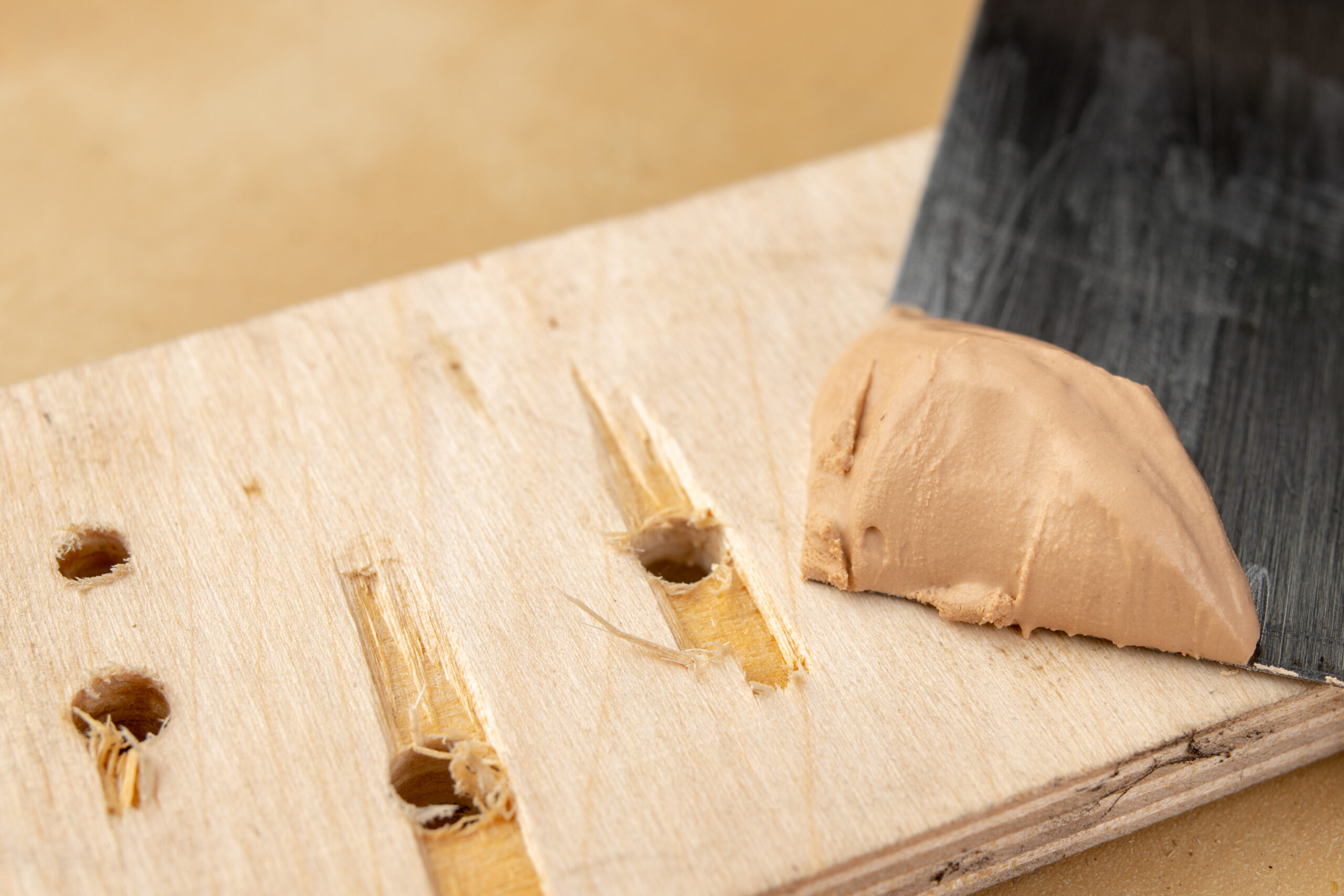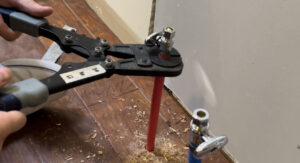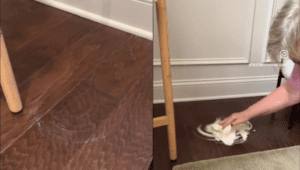To choose between wood putty and wood filler, consider the project’s requirements. Use wood filler for repairing unfinished wood surfaces, as it dries hard and can be sanded and stained. Opt for wood putty for finished wood, as it remains pliable and is ideal for minor repairs on surfaces exposed to moisture or temperature changes. Wood filler is best for indoor projects, while wood putty excels in outdoor applications due to its flexibility and durability.
In the world of woodworking, the battle of wood putty vs wood filler is one that often leaves DIYers and professionals alike scratching their heads. It’s a common conundrum I’ve encountered countless times, and I’m here to shed some light on it. Both materials are essential for achieving that flawless finish, but using them incorrectly can lead to less-than-stellar results.
Understanding the nuances between wood putty and wood filler is key to elevating your wood working projects from good to great. Whether you’re dealing with minor nicks or more significant damage, knowing which to use can make all the difference. Stick with me as I dive into the specifics of each product and guide you on when to reach for putty and when filler is your best bet.
What Is Wood Filler?
Wood filler, contrary to popular belief, isn’t just a one-size-fits-all solution. It’s a specialized concoction designed for repairing the wood’s surface rather than reviving its structural strength. Composed of wood byproducts such as sawdust, it’s held together with a solidifying binder. The dry result isn’t just for show – wood filler hardens to the point where it can be sanded down, creating a surface flush with the surrounding wood.
The textures and compositions of wood filler can vary, based primarily on the binder’s nature. There are two primary types: water-based and petroleum-based, each with its idiosyncrasies. Water-based wood fillers are a bit like chameleons; they’re malleable to your needs. If they’re too thick or crumbly, you’ve got the option to add water to achieve the perfect consistency. These fillers are great because you can adjust them as the job requires and clean up is a breeze – just use water.
Let’s dive into their characteristics a bit more.
- Water-Based Wood Fillers:
- Petroleum-Based Wood Fillers:
Here’s a crucial bit of info: whereas wood putty is ready-tinted, wood fillers are typically color-neutral. After filling and sanding, you can stain wood filler along with the rest of your project for a seamless look. This feature makes it a go-to for woodworkers aiming for a consistent, paintable finish.
When it’s time to bring out the filler, keep in mind the environment where it will be applied. Although I’ve covered the nuances of putty in previous sections, remember wood filler may not be the best choice for exterior applications as it’s prone to reacting to temperature changes. Indoor projects, however, can see great benefits from this adaptable material.
What Is Wood Putty?
When it comes to perfecting woodwork, knowing the ins and outs of wood putty is essential. Unlike wood filler, wood putty is a malleable material designed to fill imperfections in finished wood surfaces. My experience leads me to favor oil-based wood putty because of its durability and flexibility which makes it ideal for use in areas that might be exposed to moisture or changes in temperature. It’s often found in a variety of shades, intended to blend seamlessly with the already finished surface of the wood.
Wood putty stands out for being your go-to option when working with finished wood. Its adhesive qualities make it a fine choice for minor repairs and filling in nail holes or small gaps in joinery.
Not to be confused with its counterpart, wood putty stays pliable, which means it won’t harden like wood filler does. This property allows the putty to move with the wood as it naturally expands and contracts, thus preventing it from cracking over time.
Pros
- Oil-Based Durability: Especially suitable for outdoor woodwork, wood putty’s oil-based composition favors longevity and resistance to moisture.
- Flexibility: It adapts to the wood’s natural movements, reducing the likelihood of it falling out or cracking.
- Color Matched: Available in multiple shades, wood putty can be matched with the existing finish, eliminating concerns about visual consistency.
- No Shrinking or Cracking: Its formulation means it’s less prone to shrinkage or cracks compared to other wood repair products.
- Ease of use: You can apply wood putty directly from the container using a simple putty knife, making it a convenient option.
Cons
- Not Sandable: Because wood putty doesn’t harden completely, it’s not the best choice when a sandable surface is required.
- Staining Limitations: It typically doesn’t accept stain or paint, which can be problematic when dealing with unfinished wood surfaces.
- Slower Drying Time: Patience is a virtue, as wood putty often takes longer to dry than wood filler.
- Price: While offering numerous benefits, wood putty typically comes at a higher cost compared to other wood repair solutions.
- Specific Use Case: Owing to its specific characteristics, it’s not the universal solution for all wood repair scenarios.
What Differentiates Wood Putty From Wood Filler
When approaching a wood repair or renovation, it’s crucial to grasp the subtle yet significant differences between wood putty and wood filler. They’re not interchangeable, and each has its own strengths and best-use scenarios.
Wood filler is an excellent choice for minor repairs, especially on unfinished projects. Its composition allows it to dry hard, making it sandable and typically the go-to for interior projects. Notably, wood filler can also be stained, aligning with your wood project’s aesthetic seamlessly. Working with wood filler means rapid repairs with swift dry times, a clear advantage if you’re pressed for time.
On the flip side, wood putty, with its pliable nature, is exceptional for finishing touches on already stained or varnished wood. It shines when used for minor adjustments on exterior projects due to its resiliency against the elements—wood putty can endure the expansion and contraction of wood without cracking. This flexibility, however, comes with longer curing times and higher costs, so planning ahead becomes indispensable.
In reviewing the benefits and downsides of both options, consider the following:
- Best for exterior repairs: Wood putty excels outside.
- Stainable: Wood filler can be seamlessly incorporated into your project.
- Ideal for unfinished wood: Wood filler is the optimal choice for pre-finish repairs.
While I can’t make the choice for you, I can guide you to understand that your project’s requirements will predominantly determine whether wood putty or wood filler is more suitable. Each has its own set of characteristics that, when matched correctly to the task at hand, provides a durable, inconspicuous repair helping your wood projects last longer and look better.
Retailers Often Fail to Distinguish Between Wood Putty and Wood Filler, But There’s a Big Difference
As a seasoned woodworker, I’ve noticed that not all retailers make a clear distinction between wood putty and wood filler. This confusion can steer consumers in the wrong direction, potentially leading to unsatisfactory results in their wood projects. Let’s demystify these two materials.
How To Use Wood Filler
Wood filler is an essential tool in my woodworking arsenal for repairs on unfinished wood. Mixing and applying wood filler is a breeze; you simply need to press it into the defect and smooth it over with a putty knife. Since it dries hard, it’s imperative to work quickly and shape it before it sets.
How To Use Wood Putty
Moving to wood putty, I’ve often used this for finishing touches on already-varnished or stained wood surfaces. Its oil-based composition requires careful application, using a putty knife to fill holes or cracks. Because it stays pliable, there’s a bit more leeway during application; however, one must factor in longer drying times.
Sandability
A critical factor that differentiates these products is sandability. After it dries, wood filler becomes hard and sandable, allowing for a seamless finish that can easily be shaped to match the surrounding wood. Wood putty, however, isn’t meant to be sanded. Its flexibility is its strength, so once applied, it’s there to stay.
Finished Or Unfinished Wood
Determining whether my project involves finished or unfinished wood dictates the choice between putty and filler. Unfinished wood pairs with wood filler, as it can be sanded, stained, and sealed. For finished wood, wood putty’s colors can be matched to the existing treatment, making it a suitable option.
Outdoor Application
Wood putty shines in outdoor applications due to its ability to expand and contract with temperature changes. This quality makes it a stalwart choice for repairing or filling outdoor furniture, decks, and other structures exposed to the elements.
Painting
While I’m working on a project, considering the endgame involves painting or staining. Wood filler will readily accept paint, blending in with the wood. Wood putty can be more challenging if painting is planned, due to its variance in textures and finishes.
Material
Understanding the material composition helps me select the right product for the job. Wood filler is typically made from wood byproducts, and it’s ideal for repairing the wood itself. Wood putty, on the other hand, is better suited for aesthetic fixes on wood that’s already been tended to, thanks to its resilience and color-matching capabilities.
Frequently Asked Questions
Should I choose wood putty or wood filler for my project?
Use wood filler for unfinished wood and for projects that require sanding and staining. Choose wood putty for finished wood surfaces where flexibility and durability are needed.
Can wood putty be painted or stained?
Wood putty often does not accept stain or paint as well as wood filler, so it is best used on projects where a match to the existing finish is available.
Is wood filler suitable for outdoor use?
Wood filler is not ideal for outdoor use as it does not expand and contract with wood, leading to potential cracking in varying temperatures.
How should I prepare wood before applying wood filler?
Sand the area smoothly and remove all dust and debris to ensure the wood filler adheres properly and creates a smooth finish.
Can wood filler be used to structurally repair wood?
No, wood filler is not intended for structural repairs. It’s designed for cosmetic fixes and small imperfections in wood surfaces.
What’s the difference in drying time between wood putty and wood filler?
Wood filler has a quick drying time, often within hours, while wood putty has a longer curing process and may take up to several days.
When would you recommend using epoxy resin wood filler?
Epoxy resin wood filler is recommended for large timber damages, as it provides a strong, durable repair for both interior and exterior wood projects.





Which would you use to repair a vertical crack on a cutting board?
Hi David, I wouldn’t use either. Cracks in cutting boards are problematic for a number of reasons, mainly because they can harbor food particles where bacteria can grow over time. If the crack is small enough, you can use a food safe glue and clamp the board to close up the crack. But if the crack is any larger, I’d recommend just replacing the board.